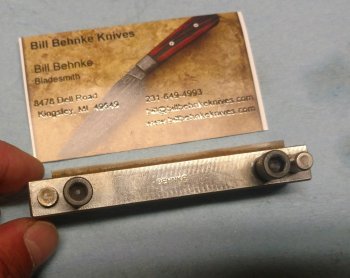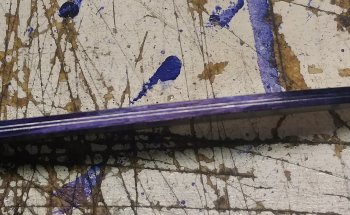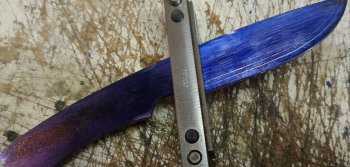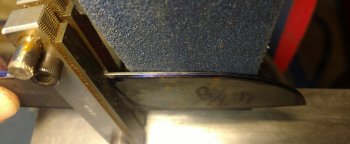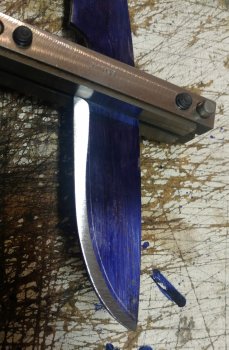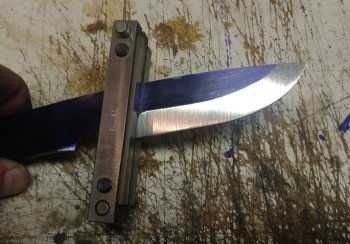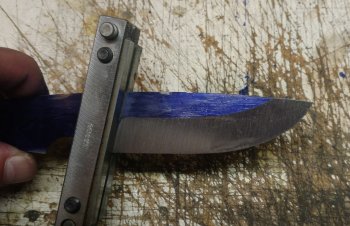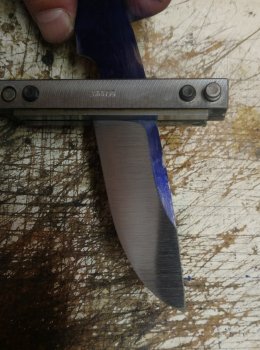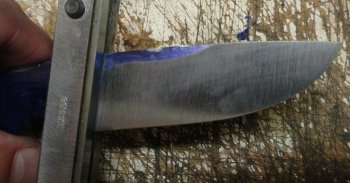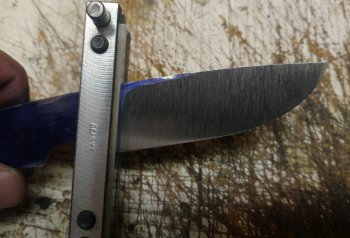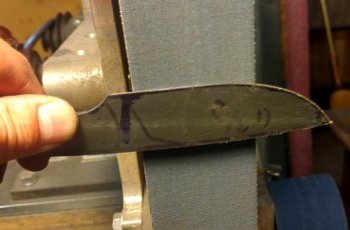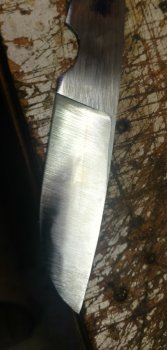I had this same problem. I'd make this beautiful 45 to my scribed line. Then when I'd go to make my bevels it seemed like I was all over the place. It all came down to getting a nice "flat" to work with.
For me, the key to the whole operation is to make a big, nice, flat angle. Let's say we are beginning at 36 grit. The very first thing I care about is making a flat surface to lay on the belt. I don't even care so much what that angle is. We are beginning at the corner of that 45, no? So right away we are grinding on this corner ridge and that doesn't help us. We need to replace that ridge with a nice "flat".
However many passes it takes, I make the same exact pass, along the same exact contact point. Sure enough, that ridge goes away...and with each pass gets flatter and flatter. Next thing you know, you have this big, wide "flat" at some angle. This flat is very easy to lay on the belt the same way every time. Now the blade is practically grinding itself. The only thing to watch is that we don't get to the center edge scribe line too quickly, and that we don't get to the top of the bevel too quickly. In theory, we would love that "flat" to widen until it reaches the center scribed line and the top of the bevel at the same time. Then we'd be done! Yeah, too bad- that never happens.
But once you have that nice, wide "flat" it becomes so easy to control your grind lines. If the angle of our "flat" is going to reach the center scribed line too soon, we begin using more pressure toward the spine. *Pressure*.. we don't rock the blade off the flat. Pressure to the spine is enough to protect our edge and move the flat toward the spine. Don't worry about blending everything perfectly. We only care about which direction we grow the flat.
I take my 36 grit bevel up to about the middle of the blade. Then 60, then 120. As the grit gets higher the blending takes care of itself for the most part. The last passes are all about reaching the center scribed line exactly and reaching the top line of your bevel. By now you are using very little pressure and tiny little mistakes are not gouging out the blade.
But, however you find your own style, having that "flat" to lay on the belt each time seriously simplifies things. I found that I wasn't gouging the blade anymore and I had much more control over my plunge lines.



